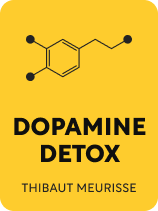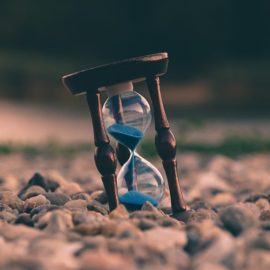

This article is an excerpt from the Shortform book guide to "Dopamine Detox" by Thibaut Meurisse. Shortform has the world's best summaries and analyses of books you should be reading.
Like this article? Sign up for a free trial here.
Are you addicted to social media or your phone? What is a dopamine detox?
Social media, television, and video games are all fun to have, but too much of them can steer us away from what’s important. Thibaut Meurisse’s book Dopamine Detox warns us that if we don’t get our dopamine levels under control, we’ll never get meaningful work done.
Continue reading to get an idea of the dopamine detox and how it can help you.
The Dopamine Detox
What is a dopamine detox? A dopamine detox is the intentional elimination of activities that trigger dopamine to decrease sensory overload. This helps you regain control of your focus so you can spend your time on your most meaningful tasks.
(Shorform note: Psychiatrist Cameron Sepah is often credited with popularizing the idea of a dopamine detox or dopamine fast. However, despite the growing popularity of dopamine detoxes, especially amongst executives in Silicon Valley, there’s little evidence to support the long-term effectiveness of the practice in improving focus and mental clarity.)
Meurisse acknowledges that the term dopamine detox is a misnomer because it suggests that the problem is an overabundance of dopamine. In reality, he explains, the problem is that when you’re overloaded by external stimuli, the brain requires an increasing amount of sensory input to release the same amount of dopamine, so you’re no longer able to feel engaged or stimulated by the everyday meaningful tasks necessary to accomplish your long-term goals.
(Shortform note: Detox culture has its roots in a long history of detoxification practices which have also been a part of traditional medicinal and spiritual practices in cultures throughout history. However, evidence suggests some detox diets and treatments can actually be harmful. Nonetheless, detoxes continue to be popular today with many people seeking to “reset” their bodies and minds by engaging in various types of detox practices.)
Meurisse outlines two models for a detox: the total detox and the limited detox.
The Total Detox
The total (or complete) detox requires you to remove all dopamine-inducing behaviors for 24 or 48 hours. Meurisse argues that this detox will reduce your level of stimulation.
The following activities are examples of dopamine-inducing behaviors to eliminate during your detox: browsing the internet, watching tv or movies, listening to music, using your phone, scrolling through social media, consuming drugs or alcohol, eating sugar or highly processed foods, and over-exercising.
Meurisse recommends engaging instead in low-stimulation activities like journaling, walking, gentle stretching, or meditation.
(Shortform note: Some people have misinterpreted the idea of a dopamine detox to believe that they must eliminate all dopamine from their system. However, a complete dopamine detox would be impossible and not recommended. Dopamine is a naturally occurring chemical that your body needs, and your body will continue to produce dopamine even if you eliminate all dopamine-inducing behaviors.)
The Limited Detox
The limited (or partial) detox requires you to eliminate your most significant source of dopamine for an extended period of time. (Meurisse recommends a trial period of 30 days.) Your significant source of dopamine might be processed foods or a specific website or app, like YouTube. While the limited detox is less challenging than the total detox, it still decreases your external stimulation and allows you to take back control of your focus.
(Shortform note: Psychiatrist Cameron Sepah suggests that a limited detox is more effective than the total detox. He contends that your detox, or fast, will be most successful if it is minimally disruptive to your lifestyle. He recommends fasting from high-stimulation activities for 1-4 hours at the end of each day, one weekend day a week, or even one week every year.)
Strategies for Success
Regardless of which detox you choose, Meurisse offers a three-step process that will help you be more successful.
First, identify activities you find addictive. He recommends thinking about activities or behaviors that you can’t imagine going without. These are the behaviors most likely to cue your brain to release dopamine.
Second, create barriers that make your addictive activities harder to access. For example, leave your phone in another room or use focus apps that block distracting websites. You can also make it easier to engage in desirable behaviors. For example, if you want to focus on working out, leave your workout clothes and equipment out so you see them right when you wake up.
Third, start your day without stimulation. Meurisse recommends setting up a morning routine that prioritizes focus over external stimulation, setting the tone for the rest of the day. Come up with two or three activities that you can do immediately after waking up that help you focus.

———End of Preview———
Like what you just read? Read the rest of the world's best book summary and analysis of Thibaut Meurisse's "Dopamine Detox" at Shortform.
Here's what you'll find in our full Dopamine Detox summary:
- Why society suffers from a constant state of sensory overload
- Why dopamine is to blame for our inability to focus and accomplish goals
- How to do a dopamine detox to regain the ability to focus






